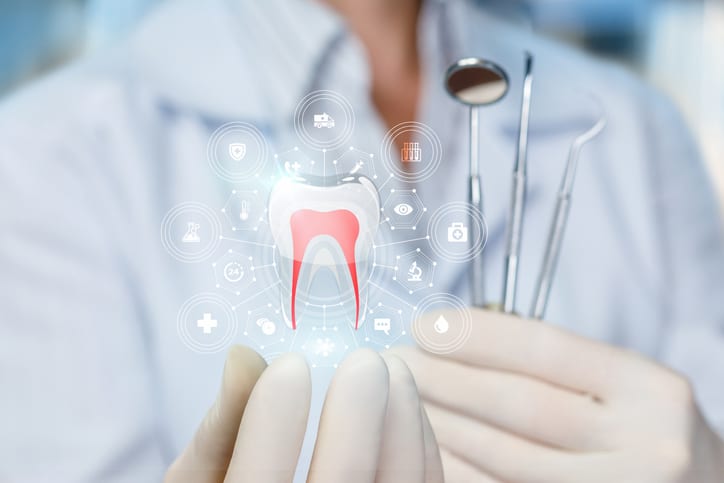For decades, going to the dentist involved sitting under the same bright light and having your mouth probed by the same tools. New technological advancements are making trips to the dentist quicker, easier, less painful, and more reliable. Due to these advancements, the dental industry is growing rapidly and looking much different than it did in years past.
A greater emphasis on treatment and prevention will mean fewer caries in patients and a lowered risk of periodontal disease. Similar to innovations within other health care professions, these new technologies will have a huge impact on how dental professionals treat their patients. Let’s take a look at a few:
Teledentistry
Teledentistry offers an opportunity to expand access to care. Like many other medical services, dental offices were forced to close for general care during the initial stages of COVID-19. Recent survey data from the ADA’s Health Policy Institute found that while most offices are once again open for business, the majority still report seeing lower patient volumes compared with pre-pandemic numbers.
Luckily, teledentistry — the delivery of dental consulting or basic examinations using video and other digital tools — offers a way to help bridge the gap. Many people are reluctant to visit the dentist for personal reasons. Imagine how difficult it can be for people with disabilities, the elderly, and people with special needs. This is where teledentistry can come in handy. The ability to offer certain dental services over the internet can provide much-needed services to individuals who do not have regular access to a dentist. This type of technology can also be useful for people who live in rural areas where no dental offices are located. Regarding COVID-19 concerns, the technology reduces the risk of viral transmission and helps dentists comply with local health measures.
The service can allow dentists to capture images, take clinical notes, and send that information to other dentists. If the dentist sees an issue, they will suggest an in-person visit to a local dentist for further evaluation. Further, teledentistry tools can help determine if a true emergency exists and an immediate trip to the dentist is required, or if a patient can wait until their regular check-up.
Virtual Reality
Virtual Reality (VR) is another up-and-coming dental technology that could help practitioners deliver better care to patients. VR completely closes off the outside world with a dedicated headset and immerses the user in a virtual environment. By slipping a headset on their head, students and aspiring dental surgeons can be transported to the OR from their couch. Traditionally, only a few students can peek over the shoulder of the surgeon during an operation, and it is challenging to learn the tricks of the trade like that. With a virtual reality camera, surgeons can stream operations globally and allow students to be there in the OR using VR goggles.
VR can also provide welcome distractions during treatment. Patients can visualize a calming landscape while seated at the dentist’s or hygienist’s chair to improve their experience and lower stress.
Artificial Intelligence
Artificial Intelligence (AI) has been an exciting new aid in diagnostics. Radiography, intraoral scans, and facial scans often present dental practitioners with a large volume of overwhelming and unstructured data. AI-driven dental imaging software can help make sense of the data quickly and efficiently.
AI tools are now more consistent than dentists in diagnosing tooth decay from bitewing and peripheral radiographs, which makes sense: AI algorithms are trained using billions of data points to make decisions based on available evidence, giving them an edge over humans when it comes to identifying specific conditions.
3D Printing
3D printing Is cost-effective for patients and practitioners. The advent of low-cost, high-speed 3D printers makes it possible for dental practices to both reduce total expenses and improve overall patient satisfaction.
Take dental implants, for example. While it could cost around $100,000 to build a lab to manufacture them, a top-model 3D printer costs around $20,000. By reducing the cost of manufacturing the tooth, dentists can reduce the price for patients.
New Security Considerations
While new dental technologies offer benefits such as increased ease of access, reduced patient stress, improved diagnostic accuracy and lower material costs, the more we use these technologies, the richer the information we have. As a result, the value of healthcare records is increasing. Unfortunately, this means that the number of ransomware and phishing attacks on dentists are on the rise.
To help limit security risk and improve patient confidence, it is important to build in security and access controls for digital data before it’s shared among healthcare services or partners. This ensures that if attacks do occur, the chance of a data breach is substantially reduced.
This Month’s Inspirational Quote
Life isn’t about waiting for the storm to pass…
It’s about learning to
Dance in the Rain
Judy😊

